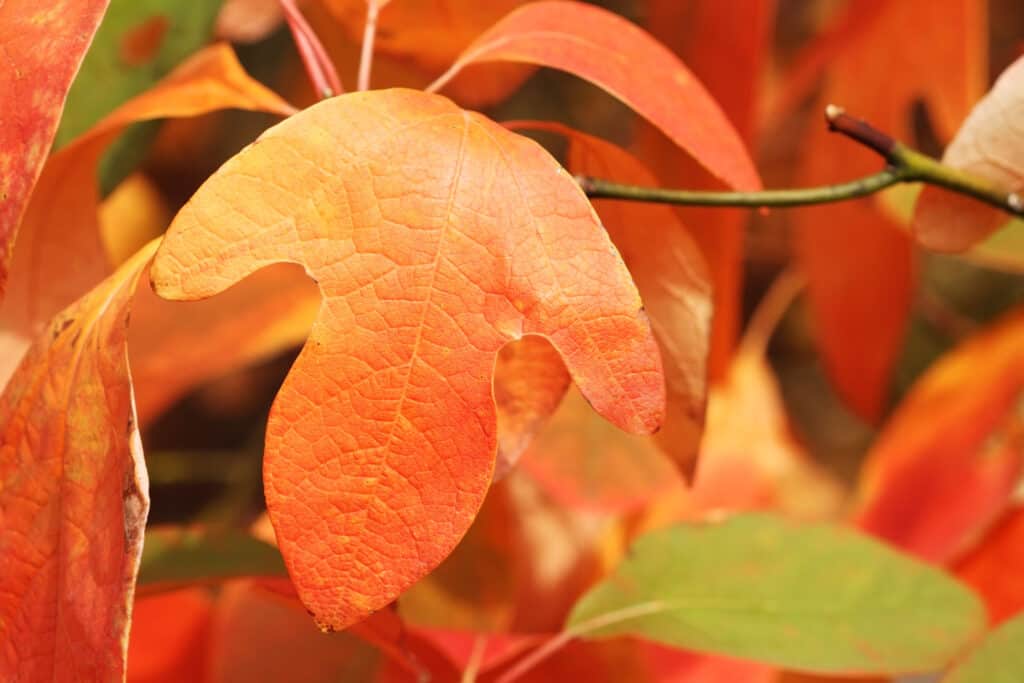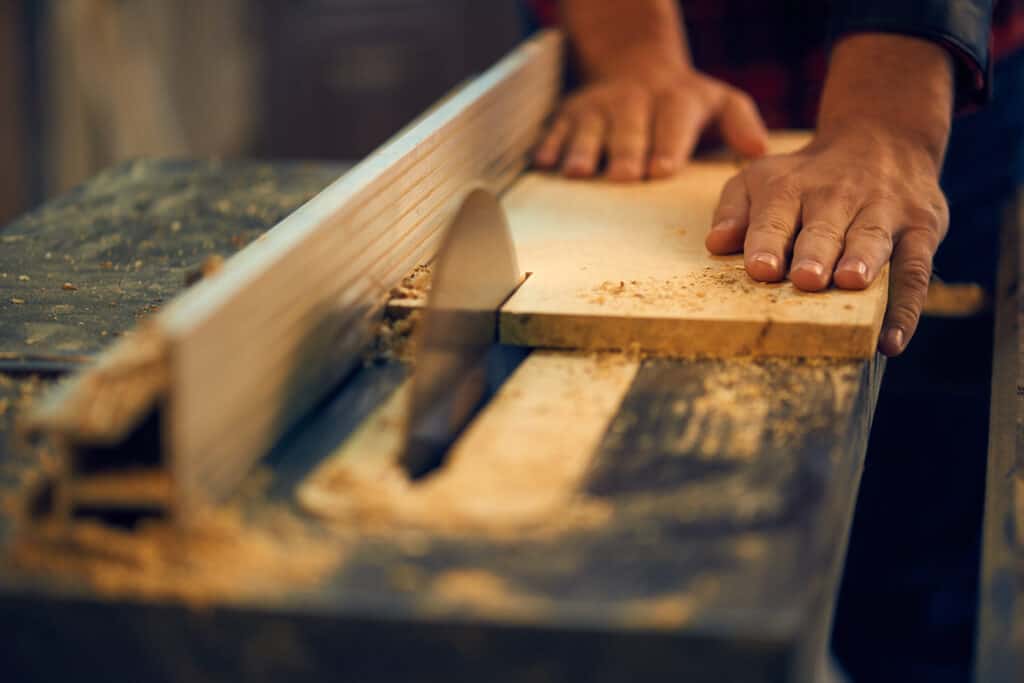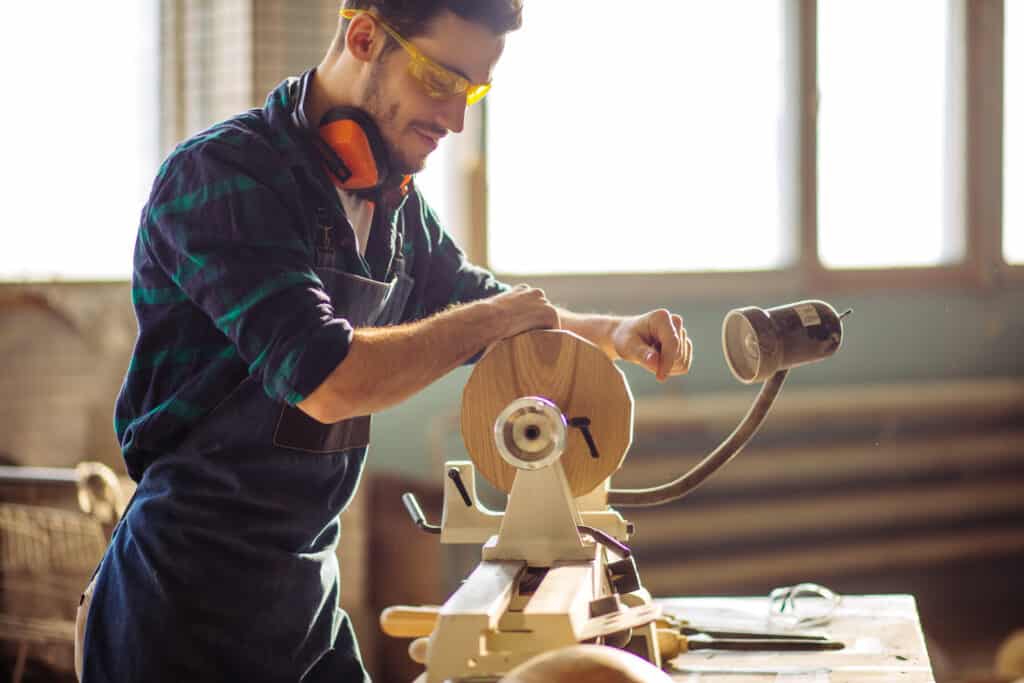The sassafras tree is a remarkably pretty one, and the wood of the sassafras tree is equally interesting. However, is sassafras wood technically safe to work with, or is it a health hazard? Let’s talk about that.
Sassafras wood is safe to work with, but only if done so correctly and carefully. Sassafras is what is called a sensitizer, meaning it can cause reactions like coughing, sneezing, and even skin irritation in the form of a rash. Sassafras oil, if directly applied or ingested, can be severely toxic.
That might sound serious, but don’t worry. You can still work with sassafras wood as long as you are careful about it. Here is some information that might be helpful!
You would be surprised how often this question comes up. We are very lucky to have a couple Master Woodworkers in our workshops who have used every type of wood imaginable on Cucamonga Woodworking. You can watch our past workshops on YouTube here(Link to Cucamonga Woodworking)
Sassafras: The Facts and the Dangers
Sassafras has been commonly used for woodworking and even consumption for years and years. It has a light, sometimes orange or olive-colored tone to its wood and is commonly used for household woodworking projects. The heartwood is often orangey and sometimes even a pretty dark brown.
It is fairly strong and workable, making it an ideal choice for amateur woodworkers especially. It is an attractive wood and can be used for various woodworking projects. The only downside is, sassafras oil and/or dust can cause reactions of varying severity in people if ingested, inhaled, or touched.
As far as concerns with the toxicity of sassafras go, it is more of a worry with consumable products than wood. As a matter of fact, the use of safrole oil and other sassafras additives have been banned in the United States by the Food and Drug Administration (FDA). This is primarily because it has been tested and proven to be a possible carcinogen, and is, therefore, a concern for public health.
As mentioned before, sassafras wood is a sensitizer. It can cause allergic reactions such as coughing, sneezing, and rashes if a person is exposed to it for long enough. If dust or oil from the wood is somehow directly ingested, it will cause severe nausea and vomiting. Continued ingestion can also cause hot flashes and diaphoresis. Keep in mind that the effects of exposure/ingestion can become worse over time if they go untreated.
Sassafras Toxicity and Help

As mentioned above, sassafras exposure manifests itself in various ways. If you are a woodworker and have been exposed to sassafras, you will likely exhibit reactions such as coughing, sneezing, and possibly some form of skin rash. If you are wearing a face mask, eye protection, and long sleeves when cutting sassafras wood, chances are you will get away unscathed. If you have merely inhaled the dust a little bit, any coughing or sneezing you might experience will likely go away within a few hours or less.
If the coughing and sneezing do not subside, you might want to contact poison control or go see a doctor right away. The same is true if you have any rashes or skin irritation (most likely on your arms). Wood dust of any kind, when inhaled often or in large amounts, is not good for your lungs, so getting medical help is your best bet. Make sure you wear proper protection when doing any sort of woodwork.
If your exposure is more severe than just dust inhalation or skin contact, your symptoms will be more severe as well. If you were to ingest sassafras oil from the roots or the wood you are working with, you might begin to experience dizziness, nausea, vomiting, and possibly abdominal pain. If you have ingested it in large amounts, the symptoms could grow much more severe. You might find yourself experiencing sweating, heart palpitations, shallow and rapid breathing, low blood pressure, and possibly even hallucinations.
If you are experiencing any of these things, you should call poison control immediately. You should never tell an affected person to try to vomit up the oil unless a medical professional has told you to do so. Before calling poison control, you should be prepared to tell them the affected person’s age, weight, health condition, the time they ingested or were exposed to the oil, and the amount that was ingested. There is not a whole lot you can do on your own without consultation from a medical professional. Making rash decisions could result in the worsening of the affected person’s condition.
Safe Woodworking

Obviously, the safety steps you need to take when woodworking vary depending on the wood and tools you’re using. However, regardless of the wood being worked, there are a few basic things you should know and do, especially if you’re using a sensitizer like sassafras wood.
The first and most obvious thing you should be using is a dust mask. People often think of flying wood chips as the most damaging and dangerous element of woodworking, but in reality, dust can be twice as bad. It can negatively affect your respiratory system if you breathe too much of it into your lungs. Dust masks can be purchased at most if not all hardware stores. Most of the disposable ones will do the job, but if you are a serious woodworker, you may want to invest in something a little more heavy-duty.
If you are constantly working with wood, it might be wise of you to invest in a respirator. These will filter airborne particles and have removable and replaceable filter pads that can be swapped out when clogged. Respirators come in varying levels of power and sturdiness, so chances are you will be able to find one that suits your individual needs. In addition, you can purchase air filters for your workshop. These, too, filter airborne particles and can help prevent you from inhaling them.
As mentioned before, you are more likely to experience reactions from sassafras wood if you fail to dress and prepare properly. You should wear long pants, long-sleeved shirts, and gloves if you want to avoid the risk of getting skin rashes. As mentioned above, dust masks are necessary to keep dust particles out of your mouth and nose. Just as importantly, you should always wear eye protection. This will not only keep out dust particles but will also protect your eyes from any flying pieces of wood.

